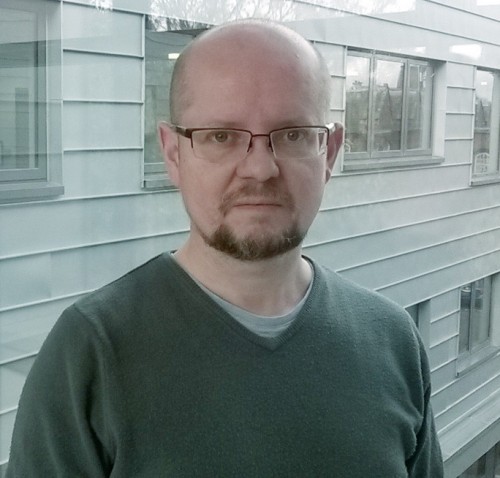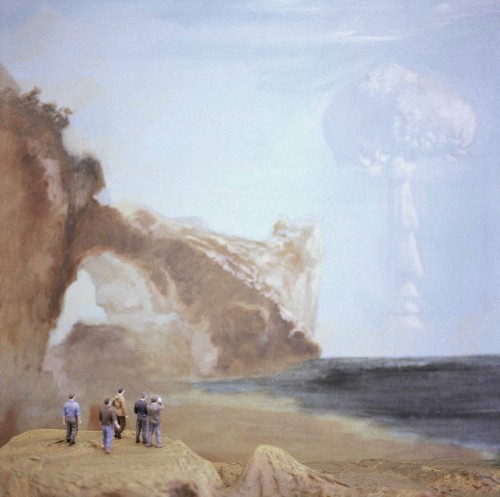12th November 2014 Budapest, Hungary
Turning Points – The twentieth century through 1914, 1939, 1989 and 2004. Contemporary art exhibition
Guest blog by John Timberlake, exhibiting artist at the Turning Points exhibition opening on Friday, 14 November 2014 in the Hungarian National Gallery.
Turning Points is a contemporary art project created together with British Council and other foreign cultural institutes operating in Hungary. Twenty-six artists from sixteen countries from Great Britain to Israel, from Spain to Japan present their analysis of history and the last century, awakening in us new, personal and emotional ideas about the past that we lived through, or which we know from listening to older generations.
I made the Another Country series between 1999 – 2001. The first works in the series were first exhibited at Sabine Wachters Gallery, Brussels, early in 2000. In 2002 they were shown at Artists Space, New York City, and then, through 2002-2003 they were the subject of a touring exhibition in England initiated by Focal Point Gallery, and supported by Arts Council England. Thereafter various works have been exhibited singly and in groups internationally on a regular basis, were purchased for various collections, and have been the subject of writing by art critics and historians.

The work comprises handmade un-retouched photographs of dioramas I made, painted and photographed in the studio. The nuclear clouds in the works are drawn from archival photographs of British nuclear test explosions, conducted between 1953-1958. I came across them whilst researching the history of the British nuclear bomb project in the Imperial War Museum’s archive. When I saw them for the first time, in the late 1990s, I was struck by a sudden sense of distance. Furthermore, the photographs reminded me of Romantic oil sketches. I suddenly imagined the clouds rising over the painted landscapes of JMW Turner and John Constable. There is a deliberate sense of fictionalized remembrance in the work: a soft-edged perversely nostalgic picturing of the unimaginable, which contrasts sharply with what we know of the dreadful reality of atomic weapons.

What does it mean to remember a war that never happened, but that nevertheless shaped all our lives as a dreadful possibility? Is it possible, in a changing world, to feel nostalgic for the certainty of uncertainty?
In this sense, the pictures’ content is latent rather than manifest, since they cannot represent a putative Third World War. Rather they point to a collective shared fiction of signifiers a kingdom of shadows. I’ve had a long admiration for the work of the Twentieth Century English artist Paul Nash: his response to the Second World War drew upon his Surrealist experiments of the 1930s, whilst the war around him grew increasingly terrible and surreal. Nash’s late works about World War II use a range of forms and shapes well established earlier in his work to depict the new circumstances of the war. It is a world of the familiar used to create estrangement, and strange things rendered oddly familiar. My choice of photographing the dioramas seemed at the time to serve both as a reference to the medium of documentary realism, and to add another layer of distance, so that, to paraphrase the English novelist L. P. Hartley, the past became another country, where things might have happened differently.
The chance to exhibit some of the Another Country pieces in the exhibition Turning Points at the Hungarian National Gallery represents a wonderful opportunity to review this work in the context of an ambitiously curated group exhibition: to think through some of the implications of the work in a fresh light, and engage with the work of other artists who share a restless fascination with history.
Learn more about the Exhibition
The views and opinions expressed in this article are those of the authors and do not necessarily reflect the official policy or position of the British government.
